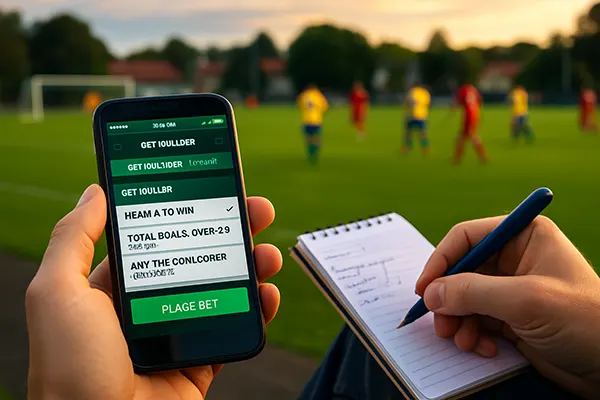The “Betting Against the Public” Model: When Fading the Crowd Works

Sports betting isn’t just about predicting who wins. It’s about finding value where others don’t. The “Betting Against the Public” model — often referred to as “Fade the Public” — has gained popularity among sharp bettors for its counterintuitive approach: profit by going against the crowd. But does it really work, and where? This article explores the behavioural logic, effectiveness, and real-life applications of fading the public in 2025.
Understanding the Psychology Behind Fading the Public
Public betting behaviour is frequently driven by emotions, media narratives, or loyalty, rather than objective analysis. Casual bettors often overestimate the chances of favourites or teams with widespread media support. Bookmakers know this — and adjust lines to exploit this bias, not reflect true probabilities.
As a result, value can be found by identifying inflated lines caused by public overreaction. Betting against these widely backed teams can lead to long-term profits. For instance, when 80% of bets are on a favourite, sportsbooks may shade the odds, creating potential value on the underdog.
This is not about picking winners blindly. It’s about understanding market inefficiencies. Fading the public works best when it aligns with analytical insights, not gut feeling. Discipline and data-driven decisions are key to success.
Behavioural Economics and the Herd Effect
“Herd behaviour” is a term used in behavioural economics to describe how individuals often mimic the actions of a larger group. In sports betting, this means people tend to back the popular side, creating market inefficiencies. These biases are particularly visible in primetime games or when betting on national favourites.
Psychologically, people enjoy validation. Backing what everyone else backs feels safe — even if it’s irrational. Fading the public means detaching from this comfort zone and trusting a contrarian approach rooted in logic and pattern recognition.
Analysing public betting percentages and line movement helps identify such moments. Many tools in 2025 offer real-time data on public splits, enhancing the decision-making process for those using this strategy.
Sports Where the Strategy Proves Profitable
The efficiency of the “Betting Against the Public” model varies by sport. Historically, the NFL and NCAA basketball have shown strong ROI when this approach is applied systematically. The smaller sample sizes per week and public interest in these sports create conditions for line inflation.
For example, since 2010, underdogs receiving less than 30% of bets in the NFL have covered the spread over 53% of the time — above break-even when factoring in vig. In NCAA tournaments, the public heavily backs seeded teams, creating mismatches in perceived vs actual value.
In contrast, sports like tennis or baseball offer fewer public-overreaction scenarios. Their more granular, data-heavy nature makes lines more accurate and less vulnerable to emotional bias. Still, anomalies appear occasionally — especially in major tournaments or derby matchups.
Updated Stats for June 2025
As of June 2025, data from multiple betting exchanges show that NFL underdogs receiving less than 25% of the public bets had a 54.1% against-the-spread (ATS) win rate over the last season. For NBA games, the trend holds when three conditions align: high betting volume, large spread movement, and extreme public consensus.
In European football, the model has become more nuanced. The best results have come from betting on mid-table away teams when facing top-tier clubs with heavy public support. These bets succeeded 52.3% of the time in 2024/25 — modest but profitable with adjusted bankroll strategy.
Overall, the numbers suggest that while fading the public won’t make you rich overnight, when applied correctly in specific markets, it provides a statistically backed edge over time.

Can Fading the Public Work with Live Betting?
Live betting introduces new dynamics where odds are constantly shifting, often faster than public sentiment can react. The “Fade the Public” model can still apply — particularly when you identify momentum-driven overreactions during the game.
For instance, if a team scores early and public bets spike heavily in their favour, books may overcorrect the odds. Sharp bettors can take advantage by betting the opposing team at enhanced value, especially if the game flow doesn’t support the sudden shift.
Live markets also allow for quicker exits. If your fade position gains early value, you may hedge or cash out at a favourable rate. This flexibility makes live betting a fertile ground for experienced contrarian punters who follow data closely.
Technology’s Role in Live Fading
Modern betting tools help apply fade logic in real time. In 2025, several services offer AI-driven alerts when public betting percentages become imbalanced mid-game. These signals, when paired with match analysis, support informed live fading decisions.
However, latency and bookmaker delay must be accounted for. Odds move quickly, and delays in execution can nullify potential value. That’s why successful live fading requires excellent timing and familiarity with the interface you use.
Moreover, not all live bets are worth fading. The key is to combine sharp betting knowledge with game insight, avoiding knee-jerk reactions to early goals or flashy plays that distort true performance metrics.
Read also
-
 Football Betting Correlation: When “Total Goals + Both Te...
Football Betting Correlation: When “Total Goals + Both Te...Combining markets like “Total Goals” and “Both Teams to Score …
-
 How Bettor Behaviour Shifts During Major Tournaments: Ins...
How Bettor Behaviour Shifts During Major Tournaments: Ins...Large international competitions consistently influence how bettors make decisions, adjust …
-
 Bet Builder Strategies for Lower Leagues: How to Find Val...
Bet Builder Strategies for Lower Leagues: How to Find Val...Lower-league football presents a unique challenge for anyone aiming to …
-
 Bookmaker Coral betting company review
Bookmaker Coral betting company reviewBookmaker Coral betting company review Coral bookmaker is one of …
